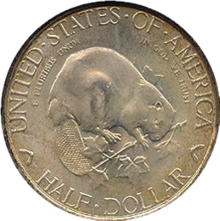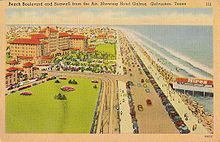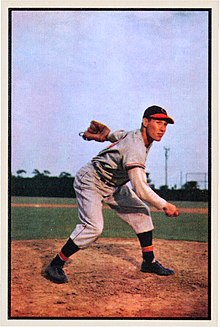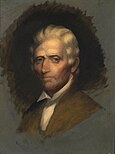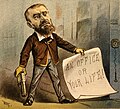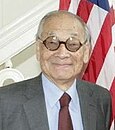Portal:United States
Introduction

| |

| |
Did you know (auto-generated) -

- ... that The Cormac McCarthy Journal is one of the few academic journals about a specific author from the United States founded while its subject was alive?
- ... that Francis Childs was the publisher and printer of The New York Daily Advertiser, the third daily newspaper to appear in the United States, in 1785?
- ... that Frances Cleveland was the first United States first lady to have dedicated journalists write about her activities?
- ... that during one of his Diddy parties, Sean Combs promised not to spill champagne on the Declaration of Independence?
- ... that the United States' largest planned solar project, Mammoth Solar, is named after mastodon fossils rather than its size?
- ... that the tripartite structure of the National War Labor Board helped the United States keep work stoppages to a minimum during World War II?
- ... that City Pier A's clock tower was the first memorial to World War I casualties in the United States, according to a New York City government spokesperson?
- ... that the spectacle lynching of George Ward drew the attendance of more than 1,000 people, including women and children?
Selected society biography -
Boone was a militia officer during the American Revolutionary War, which in Kentucky was fought primarily between settlers and British-allied American Indians. Boone was captured by Shawnees in 1778 and adopted into the tribe, but he escaped and continued to help defend the Kentucky settlements. He was elected to the first of his three terms in the Virginia General Assembly during the war, and fought in the Battle of Blue Licks in 1782, one of the last battles of the American Revolution. Boone worked as a surveyor and merchant after the war, but he went deep into debt as a Kentucky land speculator. Frustrated with legal problems resulting from his land claims, in 1799 Boone resettled in Missouri, where he spent his final years.
Selected image -
Selected culture biography -
Pei has won a wide variety of prizes and awards in the field of architecture, including the AIA Gold Medal in 1979, the first Praemium Imperiale for Architecture in 1989, and the Lifetime Achievement Award from the Cooper-Hewitt, National Design Museum in 2003. In 1983, he won the Pritzker Prize, sometimes called the Nobel Prize of architecture.
Selected location -
Abundantly rich in water, the city has twenty lakes and wetlands, the Mississippi riverfront, creeks and waterfalls, many connected by parkways in the Chain of Lakes and the Grand Rounds Scenic Byway. Minneapolis was once the world's flour milling capital and a hub for timber. The community's diverse population has a long tradition of charitable support through progressive public social programs and through private and corporate philanthropy.
The name Minneapolis is attributed to the city's first schoolmaster, who combined mni, the Dakota word for water, and polis, the Greek word for city. Minneapolis is nicknamed the City of Lakes and the Mill City.
Selected quote -
Anniversaries for February 9
- 1825 – After no presidential candidate receives a majority of electoral votes in the election of 1824, the United States House of Representatives elects John Quincy Adams President of the United States.
- 1870 – The U.S. Weather Bureau is established.
- 1889 – The United States Department of Agriculture (seal pictured) is established as a Cabinet-level agency.
- 1942 – Top United States military leaders hold their first formal meeting to discuss the American military strategy for World War II.
- 1950 – Senator Joseph McCarthy, a key actor in the Second Red Scare, accuses the United States Department of State of being filled with Communists.
Selected cuisines, dishes and foods -
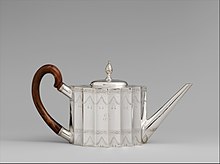
American tea culture encompasses the methods of preparation and means of consumption of tea within the context of the culture of the United States. About 85% of the tea consumed in the United States is served cold, usually as iced tea. (Full article...)
Selected panorama -
More did you know? -
- ... that the domed atrium of Indiana's West Baden Springs Hotel (inside pictured) was the largest free-spanning dome in the United States for over 50 years and in the world from 1902 to 1913?
- ... that Nicholas Longworth built America's first commercially successful winery with a pink sparkling wine made from Catawba?
- ... that the phrase "more bang for the buck" was used to describe the United States' New Look policy of depending on nuclear weapons, rather than a large regular army, to keep the Soviet Union in check?
Topics
Categories
Featured content
List articles
|
Culture Education Economy |
Geography Government
History |
Law Media Natural history |
People Protected areas Religion Transportation |
Tasks
Featured article candidatesTotal pages in content type is 3 Featured list candidatesTotal pages in content type is 3 Good article nominees
Total pages in content type is 65 | ||||
|
To create
To discuss on Articles for deletion
To expand To destub |
Assessment requests New articles Most Popular pages To find images |
Maintenance and cleanup
Other issues
| ||
Related portals
State-related
Region or city-related
Sports-related
Transportation-related
Other US-related
Nearby areas
WikiProjects
Associated Wikimedia
The following Wikimedia Foundation sister projects provide more on this subject:
-
Commons
Free media repository -
Wikibooks
Free textbooks and manuals -
Wikidata
Free knowledge base -
Wikinews
Free-content news -
Wikiquote
Collection of quotations -
Wikisource
Free-content library -
Wikiversity
Free learning tools -
Wikivoyage
Free travel guide -
Wiktionary
Dictionary and thesaurus
More portals
















